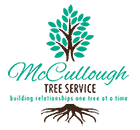By: Shelby McCullough| Published: July 16, 2024
Tree moss is a common issue that affects many trees, particularly in humid environments. While moss itself is not always harmful, excessive growth can lead to problems for the tree’s health and structure. This guide will help you understand the basics of demossing trees, providing practical steps and tips to ensure your trees remain healthy and aesthetically pleasing.

Understanding Tree Moss
What is Tree Moss?
Tree moss, including varieties like Spanish moss, is an epiphyte that thrives on the surface of trees. It absorbs nutrients and moisture from the air, not from the tree itself. However, when moss becomes too abundant, it can block sunlight, hinder photosynthesis, and add excessive weight to branches, leading to potential damage.
Why Remove Moss from Trees?
- Health Improvement: Removing moss helps trees absorb more sunlight and improve photosynthesis.
- Structural Integrity: Excessive moss can weigh down branches, leading to breakage.
- Aesthetics: Moss can make trees look unkempt and neglected.

Steps to Demossing Trees
Step 1: Assess the Situation
Before starting the removal process, evaluate the extent of moss coverage. Identify the type of moss and its impact on the tree’s health.
Step 2: Gather Necessary Tools
- Safety gloves
- Pruning shears or a small saw
- Ladder (if necessary)
- Garden hose or pressure washer (for larger infestations)
Step 3: Manual Removal
Use pruning shears to carefully cut away large clumps of moss. For higher branches, use a ladder to reach safely. Always wear gloves to protect your hands from rough surfaces and insects that may be hiding in the moss.
Step 4: Washing the Tree
For heavy infestations, use a garden hose or a pressure washer with a gentle setting to wash off the remaining moss. Be cautious not to damage the bark or branches with high-pressure water.
Step 5: Maintenance
Regularly check your trees for new moss growth and remove it promptly to prevent future infestations. Keeping trees well-trimmed and healthy can also reduce moss growth.

Benefits of Regular Demossing
Health Benefits
- Enhanced Photosynthesis: Removing moss allows more sunlight to reach the leaves, promoting healthier growth.
- Reduced Pest Habitat: Moss can harbor pests that may harm the tree.
Structural Benefits
- Prevent Branch Breakage: By reducing the weight on branches, demossing helps prevent breakage and potential damage to property or people.
Aesthetic Benefits
- Improved Appearance: Regular demossing keeps trees looking neat and well-maintained, enhancing the overall appearance of your landscape.

Common FAQs about Demossing Trees
Q1: How often should I demoss my trees?
- A1: It depends on the growth rate of the moss and the local climate. In humid areas, you may need to demoss once or twice a year.
Q2: Is moss removal harmful to the tree?
- A2: When done carefully, moss removal is not harmful. Be gentle and avoid damaging the bark or branches.
Q3: Can I use chemicals to remove moss?
- A3: While some chemical treatments are available, they should be used with caution. Natural methods are preferred to avoid harming the tree or surrounding plants.
Q4: What type of trees are most affected by moss?
- A4: Moss commonly affects trees in humid environments, such as oaks, elms, and maples.
Q5: Can moss removal prevent other tree diseases?
- A5: Yes, by removing moss, you can reduce the habitat for pests and fungal infections, contributing to overall tree health.
Conclusion
Demossing trees is a vital aspect of tree care, particularly in humid environments. By following the steps outlined in this guide, you can ensure your trees remain healthy, structurally sound, and visually appealing. Regular maintenance and prompt action when moss is detected will help protect your trees and enhance your landscape.
Contact McCullough Tree Service Today!
For professional tree demossing services, contact McCullough Tree Service. Our certified arborists are equipped with the knowledge and tools to safely and effectively remove moss, ensuring the longevity and beauty of your trees. Call us today for a free consultation and let us help you maintain a healthy and vibrant landscape.

